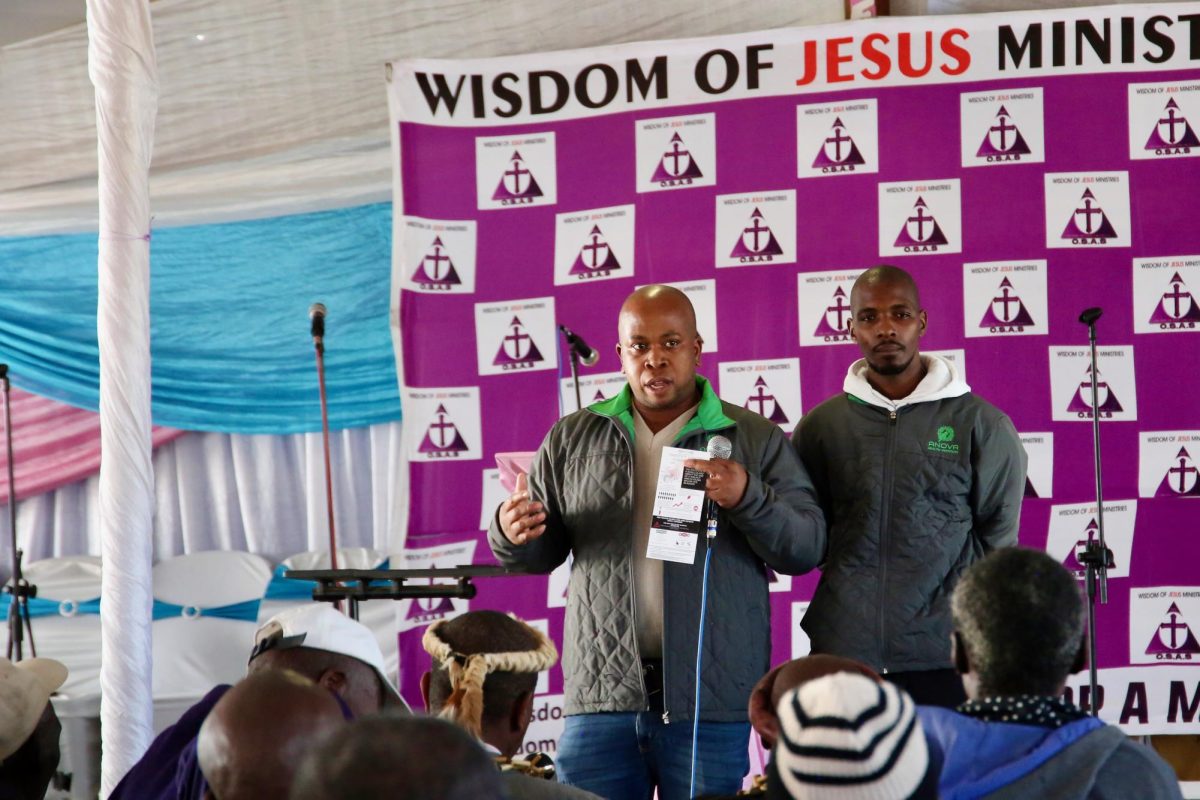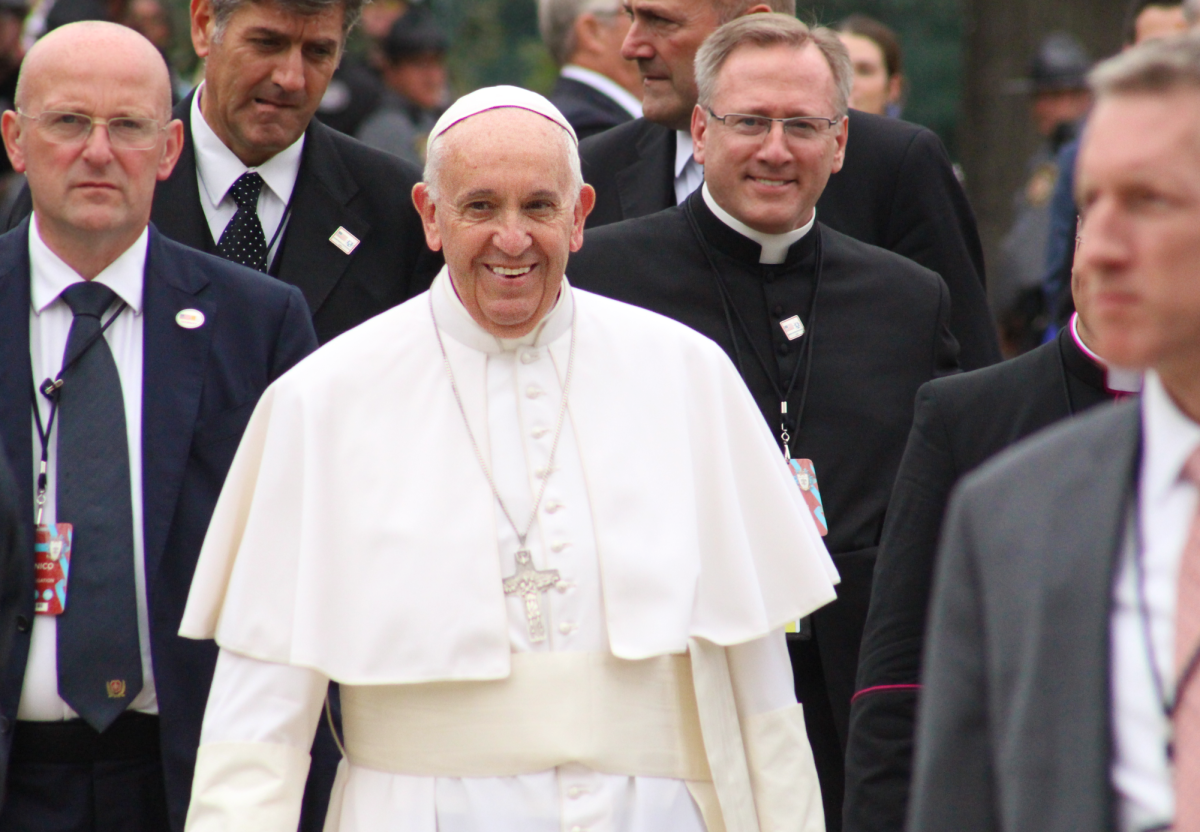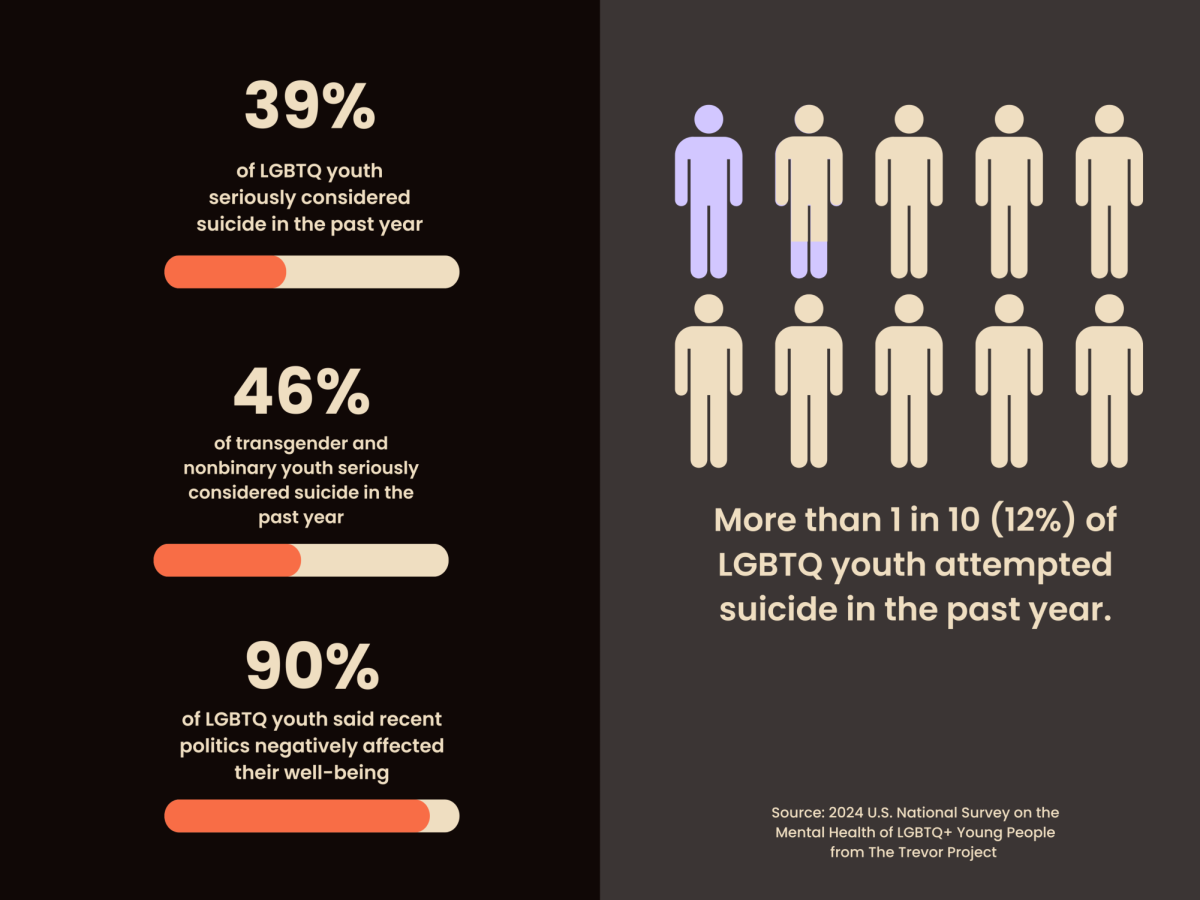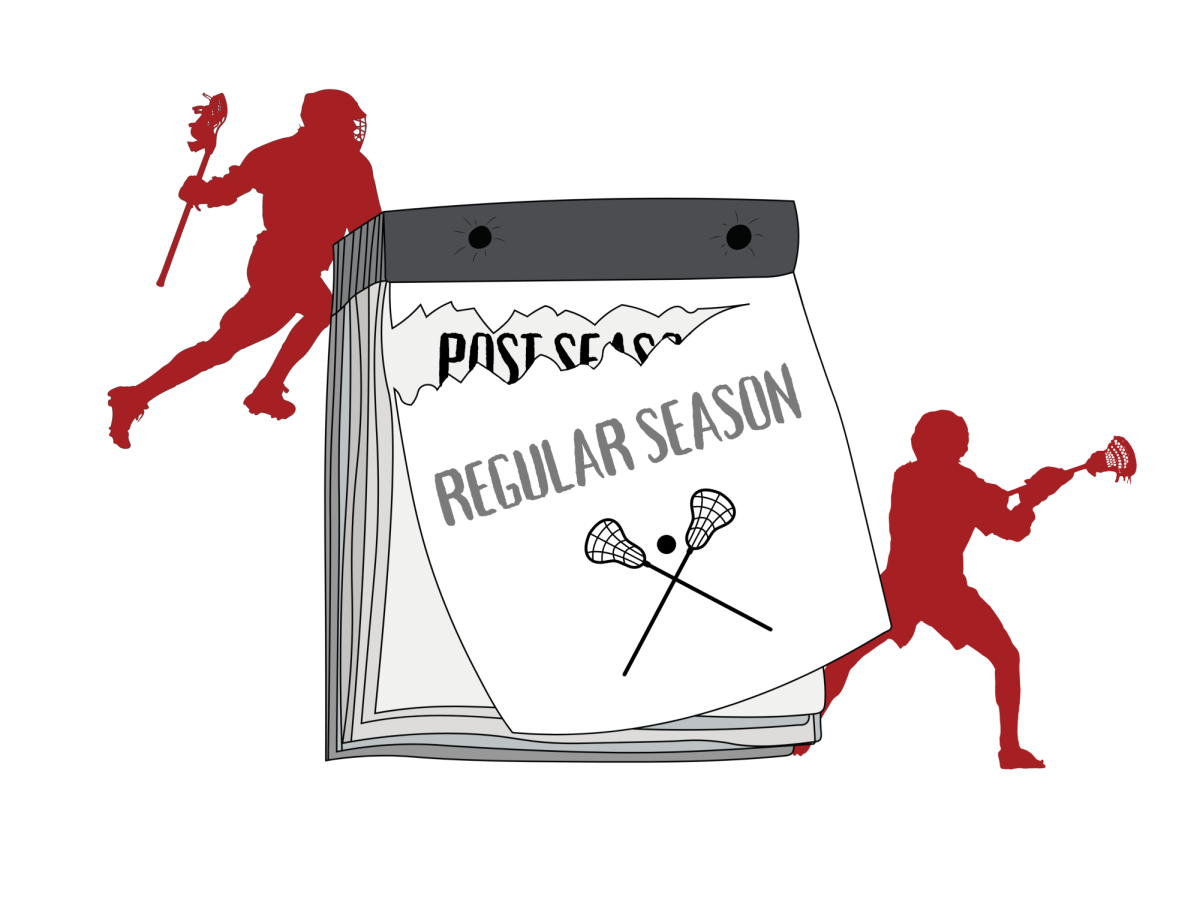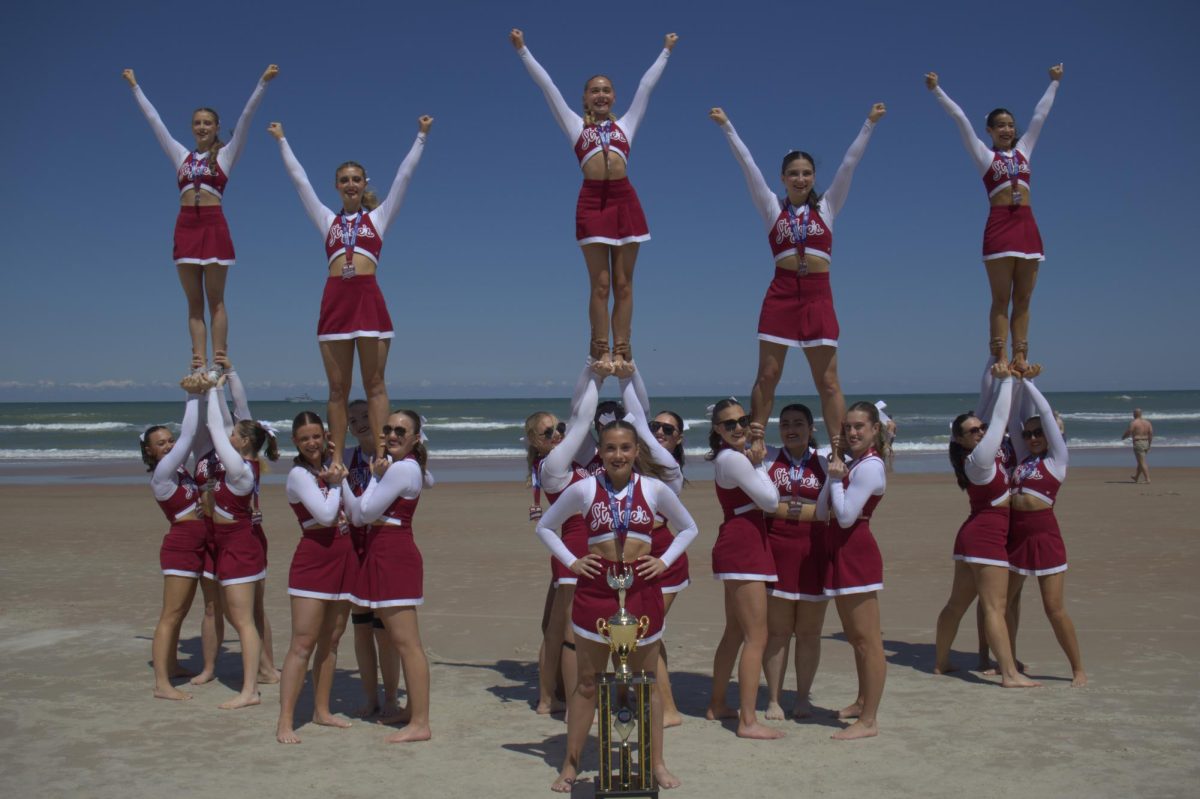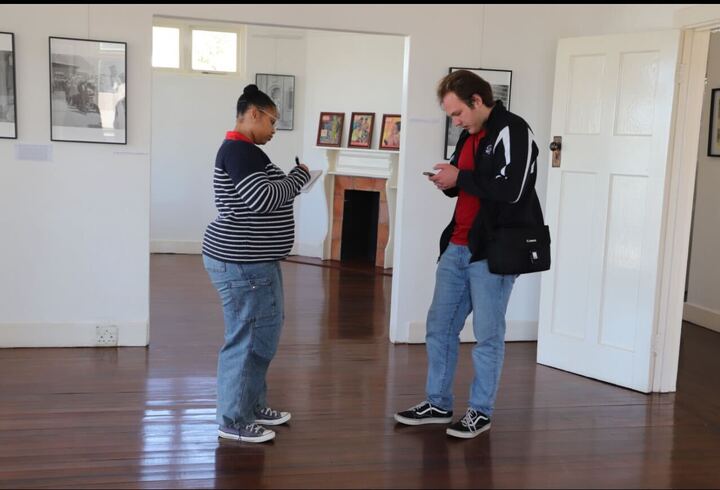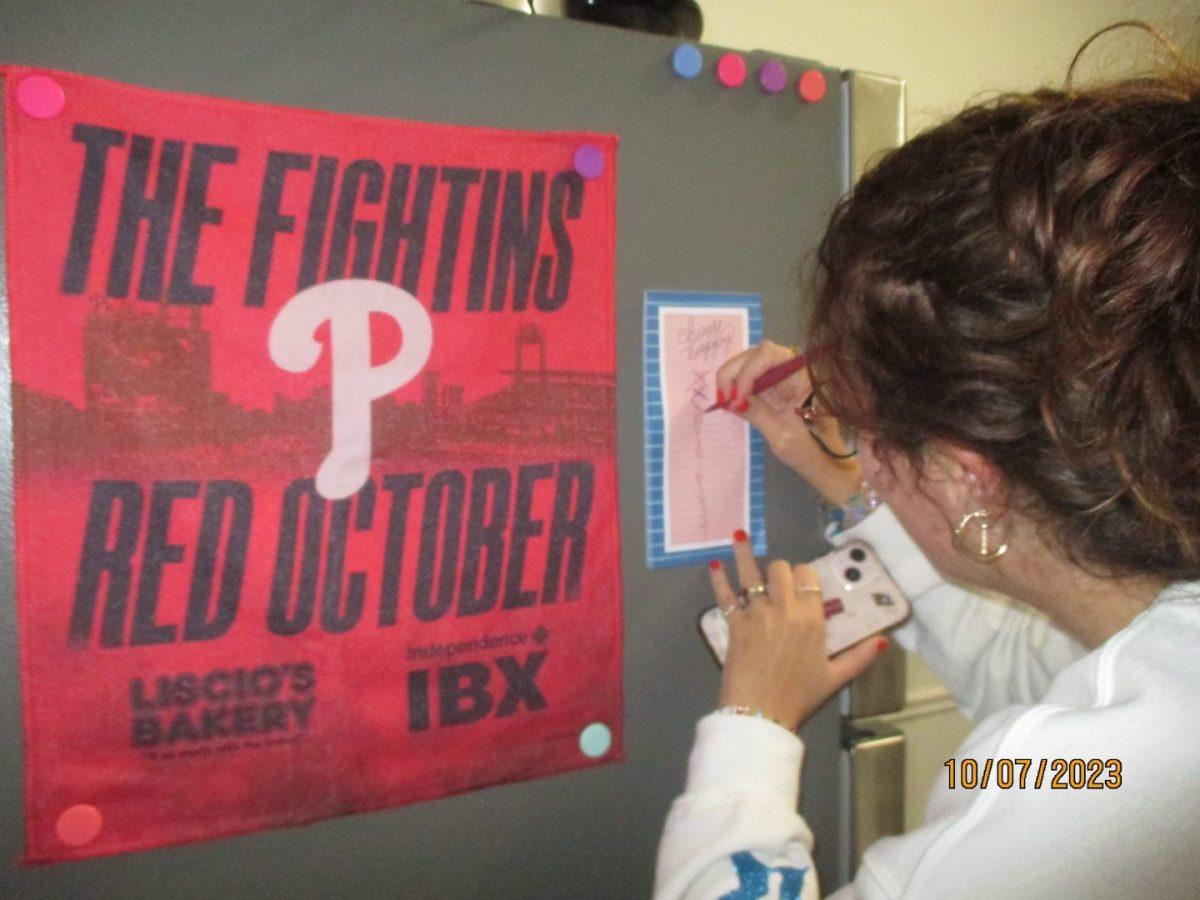St. Joe’s archives not reaching fullest potential
Located on the third floor of the Post Learning Commons, the Saint Joseph’s University Archives occupies the least-populated area of the typically bustling library. Most people only go to the Archives if they have a reason to be there, such as students brought by professors, or others doing research for projects related to the university’s history.
Behind the large wooden doors that lead into the archives’ rooms are documents and artifacts dating back to the university’s founding in 1851, when it was located on Willings Alley in Old City. There are medals from early years of the university, awarded to students for academic excellence, and an original painting of Felix Barbelin, S.J., the university’s first president. There are also some more recent items, including a model of the Hawk mascot and helmets and shovels from the groundbreaking of the Post Learning Commons, which recently celebrated its fifth anniversary.
University archives are responsible for the institution’s historical record. That means collecting, maintaining and preserving documents and other materials. But that mission has been difficult to fulfill at St. Joe’s. A lack of resources, staffing, space and plan for acquisitions have left the archives floundering—even as researchers do what they can.
Daniel Joyce, S.J., ’88, executive director of Mission Programs at St. Joe’s, has visited the archives several times to do research about the history of St. Joe’s and the greater Philadelphia area. Because the archives are small he said that he was able to quickly get what he needed.
However, Joyce also said that the materials within the archives are limited, and the archives on campus “do not function as a major archive would.”
“We don’t have lots of material,” said Christopher Dixon, the university’s archival research librarian. “We get things when they’re donated. It’s a long process.”
Katryna Perera, ’16, investigated potential connections between St. Joe’s and the slaves that the Maryland Province of Jesuits owned for two stories that appeared in The Hawk in April 2016. Like Joyce, Perera said she found the archives to be helpful but also, in some ways, lacking.
“There is definitely a lot of missing information, and when I was doing my story on slavery, the problem was that there was no information on what I was exactly looking for,” Perera said. “The info does exist. It just wasn’t accessible immediately to me because it was at Georgetown [University]. It would be great if we could get hold all the documents related to [St. Joe’s] right on site, but I don’t think the library has the capacity for that.”
While St. Joe’s has had an Archives Collection since the university’s founding, as a space for storing historical documents, the Archives Collection as they are known today did not come to fruition until 1987, when Josephine Savaro, formerly the head librarian, was named archivist. In the 30-year history of the archives, Savaro is the only one to have held the actual title of archivist.
Nancy Miller, who held the title of archival research librarian, succeeded Savaro, and worked with Dixon until she left the university to work in the archives at the University of Pennsylvania. Dixon has been the sole holder of the position of archival research librarian since 2008.
“We’re fairly new at doing this,” Dixon said.
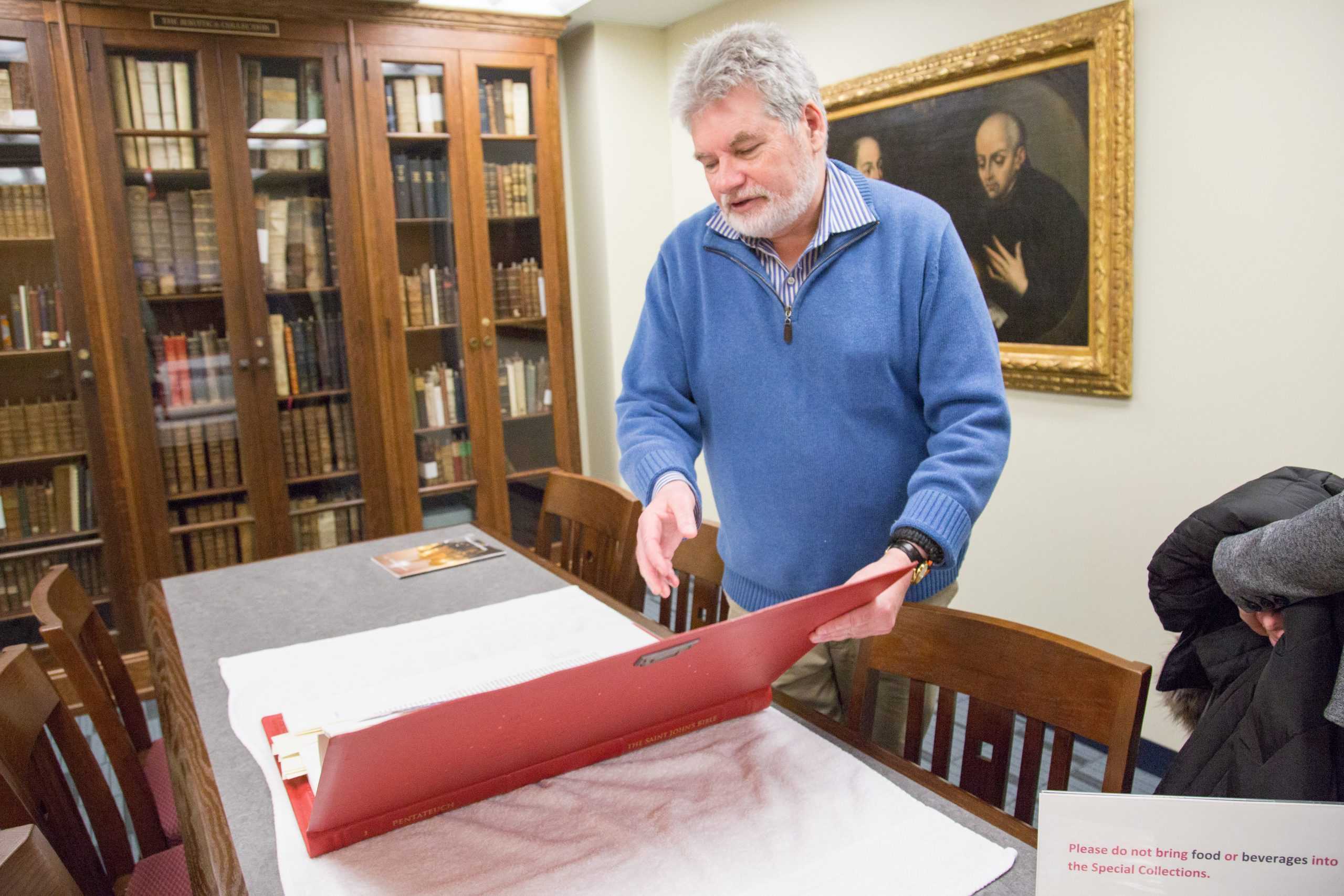
While the St. Joe’s archive has grown from one room in the basement of the Drexel Library to the suite of workrooms and scholars’ rooms on the third floor of the Post Learning Commons, the archives seems to suffer from the lack of an overall plan.
“We need to set up a plan, look at what we have, what is our acquisition plan,” said Anne Krakow, library director. “We need to ask ourselves, ‘Do we want to go in this direction or that direction?’ Right now, what we’re doing is just taking it as it comes.”
Like St. Joe’s, Villanova University’s archives were also recently established.
Villanova’s Archives reside in the Falvey Library, but there are multiple archives on the campus, according to Michael Foight, special collections and digital library coordinator and acting university archivist at Villanova. The law school keeps its own records, and others are kept by the Augustinians at the St. Thomas Monastery on campus.
In comparison to the archives on the St. Joe’s campus, Villanova’s archives have more space, resources and staff.
“As part of the library, [the archive] is comparably well-staffed,” Foight said. “There’s a budget for housing and preservation of materials, and there’s enough room for HVAC archival storage of print and electronic materials.”
Archives can only preserve what they are given and collecting has become more difficult due to the digital nature of communications.
Carmen Croce, director of the Saint Joseph’s University Press and curator of the University Art Collection, acts as somewhat of an unofficial archivist at St. Joe’s. He has been employed by St. Joe’s since 1967. Croce has noticed that, while the digital age has made communication convenient, it also poses a problem for record-keeping and preservation.
“I do print out some things, because I realize how important that is, but 90 percent of everything I do is on a computer,” Croce said. “So, that’s a problem for archives all over. It’s a problem for collecting and preserving and interpreting. These various media devices, it’s really a nightmare.”
Krakow said she has been working with Deborah Lenert, the manager of library digital services at St. Joe’s, as well as communicating with other universities’ archivists and librarians about their plans for the future of their archives.
“[We’ve been] looking at other Jesuit colleges and universities who already have in place plans for acquisitions from departments,” Krakow said. “So, hopefully in the next six months, we’re going to look at some of those plans and create our own plan, to say, ‘This is what we’d like to acquire from departments so we can preserve that history and that culture.’”
However, a plan is not an easy fix or a perfect solution. For example, Villanova’s archives does have an intake plan in place, but staff still have trouble collecting materials.
“There is a records retention schedule that lists all forms of university records,” Foight said. “The dispositions for some of those materials include ‘transfer’ to archives or ‘copy’ to the archives. The problem is that most offices don’t comply with the records retention schedule, most things are born digital and while the records retention system has provisions, little to none of that gets transferred to the university archives.”
At Villanova, the archives’ digital presence has expanded. They’ve been digitally displaying current exhibits via their website. The site also has previous exhibits archived so that they are still available.
Georgetown University also has information about current and past exhibits, a searchable archival photo collection, and records dating back to before the university’s 1789 founding. Likewise, La Salle University, whose former archivist, Brother Joseph Grabenstein, F.S.C., stepped down from the position this past fall, also has some resources available via its archives’ website.
St. Joe’s does not currently have digitized versions of its exhibits. The archives’ website, a page on the site for the Post Learning Commons and Drexel Library, contains information about the St. John’s Bible, which is a handwritten and hand-illustrated edition of the Bible done by a master calligrapher between 1998 and 2011. Only 299 copies of the seven-volume Bible were made, and one was acquired by St. Joe’s in 2014.
The archives’ website also provides details about university’s photo collection (though photos are not directly searchable), as well as a digital archive of The Hawk, with issues from 1930 to 2002. Beyond that, though, the site does not contain information about any past, present, or upcoming exhibits, or about the materials currently possessed by the archives.
Croce works with Dixon on both the special collections and the curation of exhibits. He said it is up to the archivist to decide what belongs in the archives, what helps chart the university’s history—and then go after it.
“Most people, within their daily activities, aren’t thinking that what they’re doing has any relevance to the story of the university as it moves forward, but it does,” Croce said. “But saving them isn’t enough. They need to get from your filing cabinet to the archives. And, of course, the library doesn’t ask people for things.”
Krakow agrees with Croce in that there is more that the university can do to help its Archives Collections.
“This university, as well as a lot of other universities right now, are going through a difficult time readjusting to the economic landscape of higher education,” Krakow said. “We need to get organized here.



